Feature
Belarus – Russia’s nuclear option?
Military ties between Belarus and Russia remain strong after Moscow's invasion of Ukraine, with talk the former could host the latter's nuclear weapons. Andrew Salerno-Garthwaite reports.
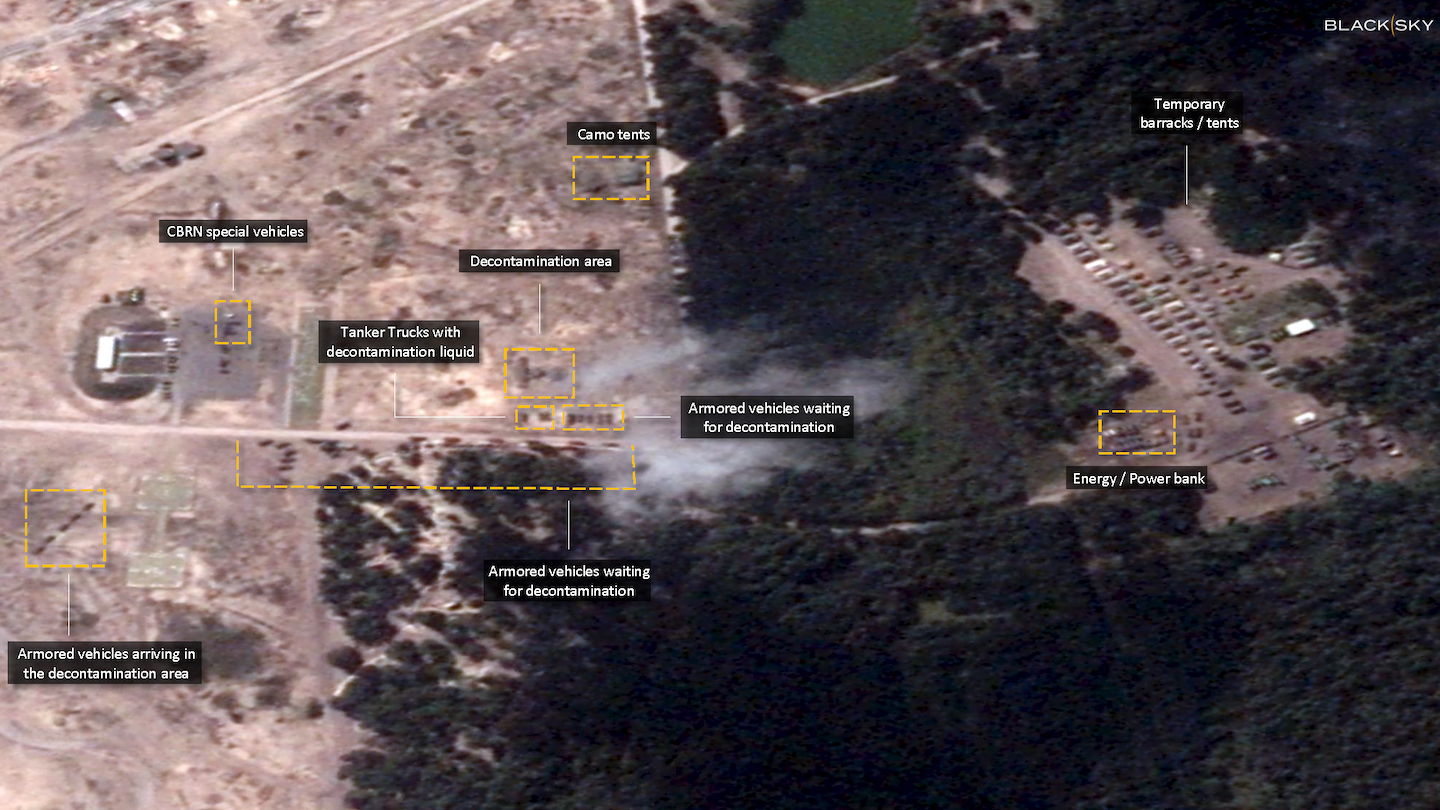
Satellite image of a radiological decontamination exercise at Bretsky Training Ground in Belarus on 2 September 2023. Credit: BlackSky
Satellite imagery of Belarus from the start of September captured covert radiological warfare exercises by an alliance of post-soviet states, provoking concern among analysts that Russia is committed to hosting nuclear weapons in Belarusian territory.
The intra-day imagery, gathered by geospatial intelligence company BlackSky and then independently verified by specialist defence services company Preligens, exposed the radioactive decontamination of a formation of military vehicles at Bretsky Training Ground, near the borders with both Poland and Ukraine, as part of Exercise Barrier, an exercise intended to prepare ground forces for combat operations in a hazardously irradiated environment.
Evidence from early September weakened lingering doubts that Belarus-Russia nuclear weapon transfer discussions were a political gesture unsubstantiated by tactical preparation. Analysts from the International Institute of Strategic Studies (IISS) and the Polish Institute of International Affairs considered the possible nuclear sites in Belarus that may host warheads under the watch of Russia’s elite 12th GU MO, the directorate of the Russian Ministry of Defence responsible for its nuclear capability.
Behaviour inconsistent with CSTO description of activities
A description of Exercise Barrier from the CSTO on 2 September stated that the personnel were engaged in activities associated with containing biological hazards. However, the associated photography did not show biohazard preparations, and instead pictured personnel engaging in practices characteristic of radiological decontamination, according to William Alberque, director of strategy, technology and arms control at the IISS. One photograph from Exercise Barrier features a soldier in protective clothing badged with Russian insignia standing guard over materials marked as radioactive waste.
This is real low-key signalling, to professionals, that they are thinking about this.
William Alberque, director of strategy, technology and arms control, IISS
Intra-day imagery of the site in Belarus was possible because of the prograde orbit of the BlackSky satellite constellation. Many modern imaging satellite networks use constellations on polar orbits from north to south. This contrasts with BlackSky's satellites moving with the direction of the Earth's rotation. The approach results in a low latency between request and retrieval of imagery, as over any point of the Earth's central bands, a BlackSky satellite traverses every hour.
Independent verification of the satellite imagery was conducted with Preligens, a specialist company for artificial intelligence and machine learning in satellite intelligence.
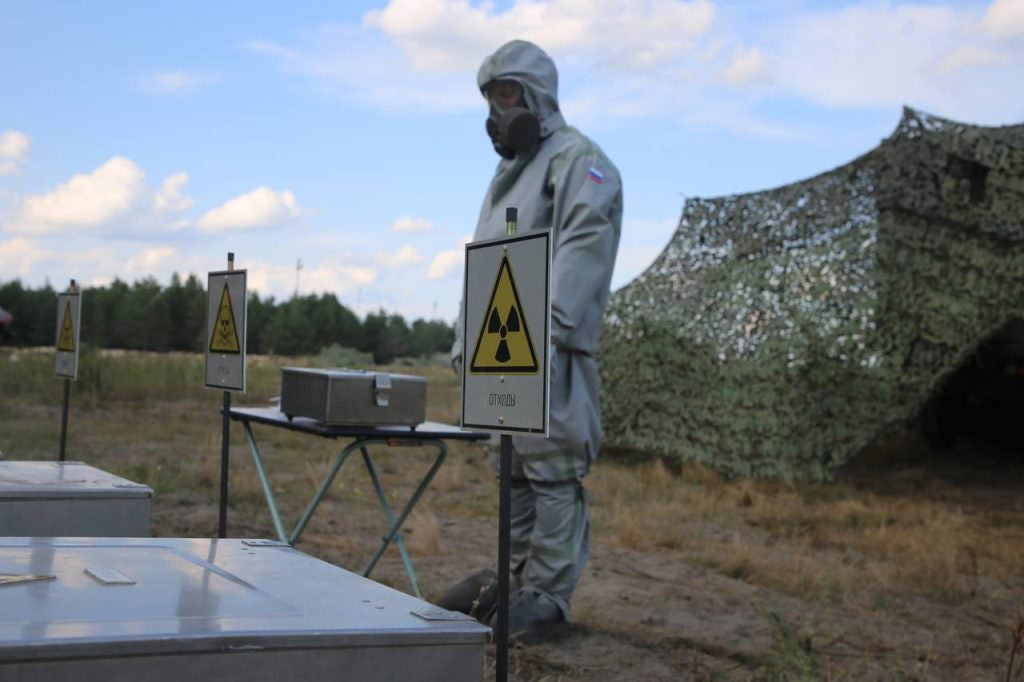
A soldier at Bretsky Training Grounds in protective clothing badged with Russian insignia standing guard over materials marked as radioactive waste, 2 September 2023. Credit: Belarusian Ministry of Defence
Exercise Barrier was a part of the six-day event Combat Brotherhood 2023, an annual joint-training exercise between member states of the CSTO including Belarus, Kazakhstan, Kyrgyzstan, Russia and Tajikistan. The decision by the CSTO to run radiological CBRN exercises in Belarus this year was interpreted as a message to the analyst community that Russia is serious about transferring nuclear weapons to Belarus. “This is real low-key signalling, to professionals, that they are thinking about this,” said Alberque.
Nuclear signalling
Russia is known to engage in signalling on separate discrete levels. For internal audiences, state media companies have proven compliant in spreading sanctioned narratives. Some actions are instead shaping manoeuvres, designed to influence an adversaries’ disposition through propaganda or demonstrations of force before a military operation, and will reach a similarly broad audience in the international community.
However, Alberque described the radiological exercises in Belarus as a nuanced message intended for an international community of experts in national security.
The first warning light has just gone off. Now do you ignore it and pretend your engine is fine, or do you wait for the engine to fall out?
William Alberque, director of strategy, technology and arms control, IISS
The scale of the Exercise Barrier was on a tactical level, providing a subtle indicator to analysts that Russia’s defence posturing is trending towards nuclear weapons placement in Belarus, according to the analysts consulted for this article. Were the exercises at the strategic level – decontaminating thousands of vehicles every hour – the messaging would be designed to reach a wider audience. However, Alberque was no less stirred by the discrete nature of the signal: “The first warning light has just gone off. Now do you ignore it and pretend your engine is fine, or do you wait for the engine to fall out?”
While the leaders of Russia and Belarus have in the past made brinksmanship statements suggesting a transfer of nuclear weapons would happen, and sightings of 9K720 Iskander missiles capable of carrying the warheads have been observed at sites on Belarusian territory, it appears that construction of the prerequisite transport requirement for the transfer of nuclear capability has not been pursued by either country, seeding doubt against the transfer going ahead.
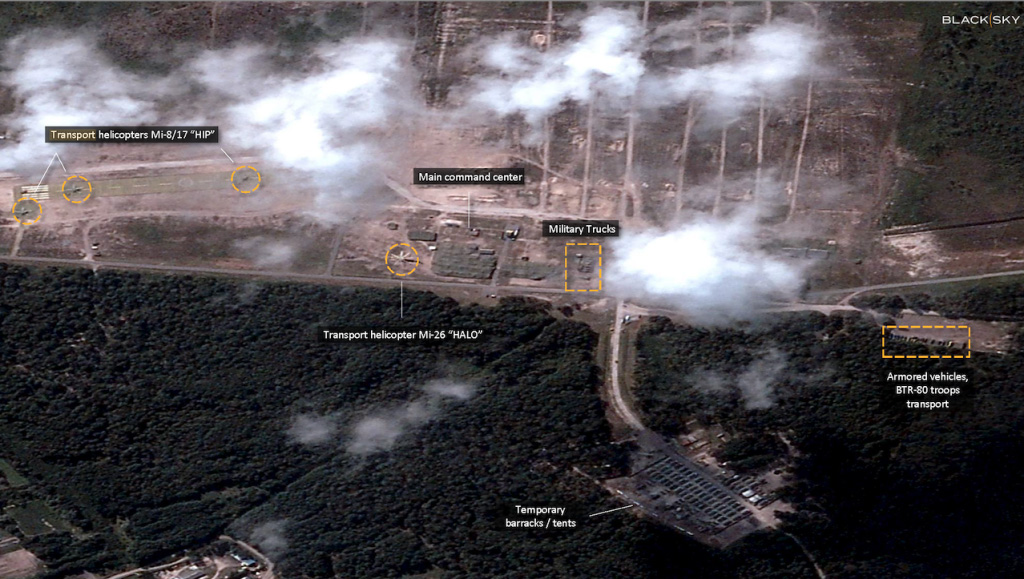
Satellite imagery of the main command centre for Combat Brotherhood 2023. Credit: BlackSky
The perception among national security analysts familiar with the region is that discussions on the movement of nuclear weapons to Belarus had been a strategy for Russia’s military forces to ingress within its neighbour’s territory. Ostensibly these troops would act as operators and guardians of the nuclear capability, but in reality, the visiting Russian personnel from Russia’s 12th GU MO would take root to extend Putin’s political control within neighbouring Belarus, while zero nuclear weapons would be transferred.
What is the strategic benefit?
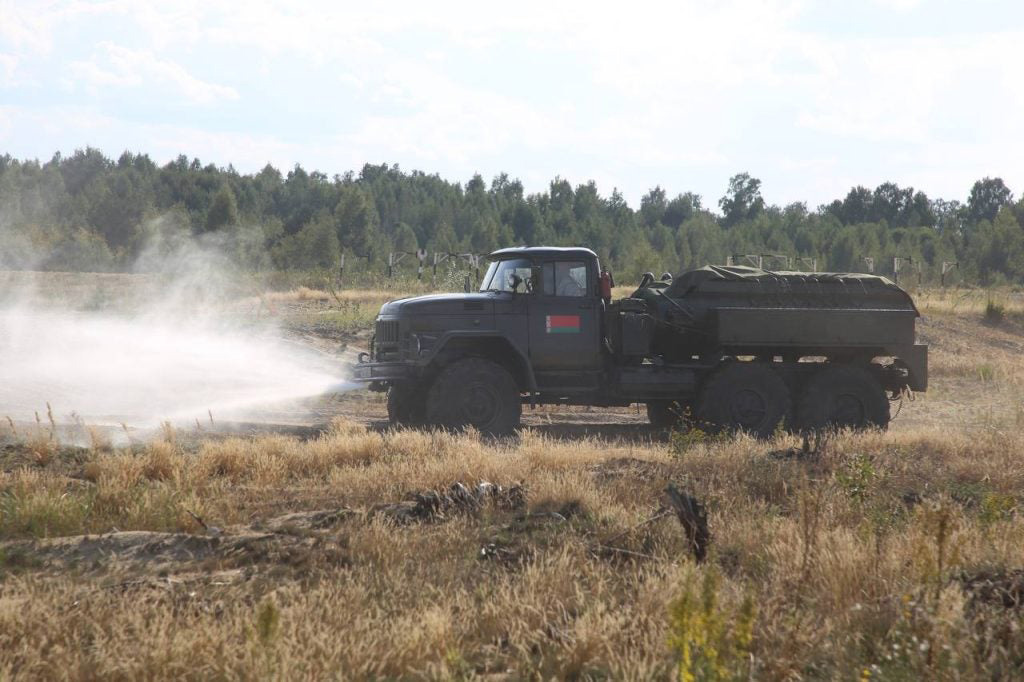
A vehicle at Bretsky Training Grounds spraying fluids for decontamination, 2 September 2023. Credit: Belarusian Ministry of Defence.
Anna Dyner, international security analyst at the Polish Institute of International Affairs, stressed that the placement of nuclear weapons in Belarus would cause an ongoing security risk for the country. “For Belarus itself I think there are no benefits for it,” commented Dyner when asked about the drivers for deployment of Russian nuclear weapons to Belarus. “It causes a serious danger for them. Just thinking about contingency planning and so on… it will cause a reaction from the Nato side, so it means that Belarusian territory will be a target.”

A soldier at Bretsky Training Grounds in protective clothing decontaminating an BTR-82A Armoured Personnel Carrier, 2 September 2023. Credit: Belarusian Ministry of Defence
However, the decisions to run the recent radiological exercises in Belarus has a bearing as to how national security analysts will calculate the likely threat landscape.
It even causes a serious danger for [Belarus]… Just thinking about the contingency planning, it will cause a reaction from the Nato side, so Belarusian territory will become a target.
Anna Dyner, international security analyst, Polish Institute of International Affairs
Signalling to the expert community that nuclear weapons are present in Belarus is less about sabre-rattling and bellicose posturing and has more to do with adding rungs to the ladder of escalation, according to Alberque. Without necessarily escalating the nuclear threat, in the calculus of nuclear security experts, Exercise Barrier gives Russia more options to de-escalate if so desired, and to demand corresponding concessions from its adversaries.
Dyner highlighted this aspect of Russian planning, stressing the importance of an announcement in June from the Russian Ministry of Foreign Affairs that stated Russia would be ready to withdraw its nuclear warheads from Belarus if the US decided to withdraw its nuclear warheads from the territory of Germany.
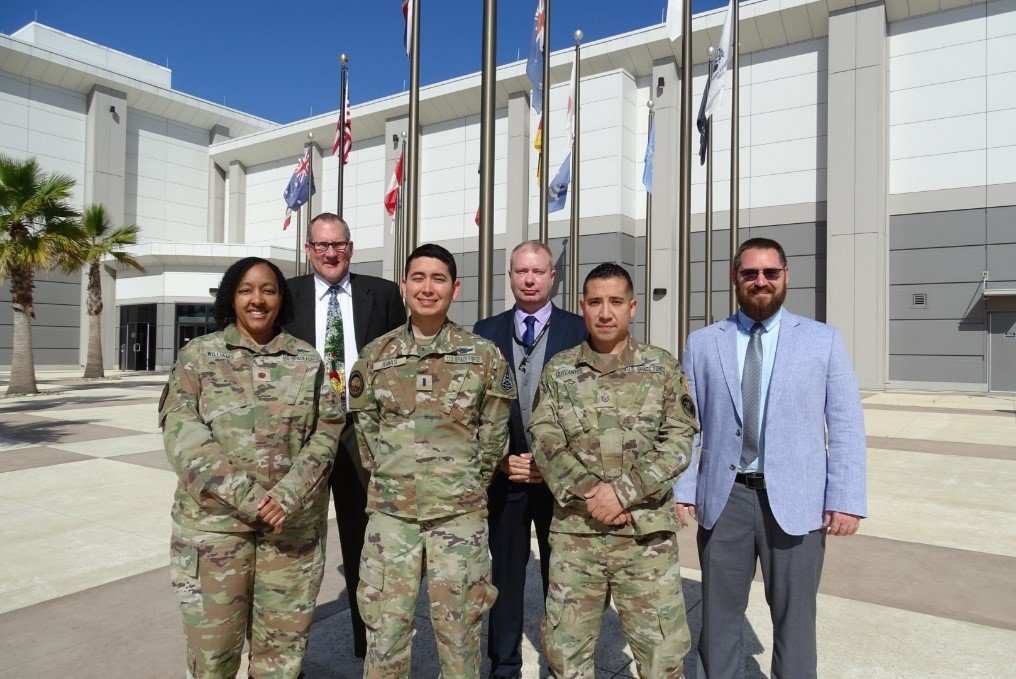
Caption: The Combined Force Space Component Command Operations Directorate team stands at the first “Rapid Tiger” advanced training event from 28-31 March, 2022. Credit: US Space Force/Lt. Col. Mae-Li Allison
So, these kinds of decisions, which human beings had to do - and human beings, of course, are very intuitive - that intuition also gets embedded with AI machine learning.
Dr Rajeev Gopal, vice president for Advanced Programmes at Hughes.
Australia could be one of the main beneficiaries of this dramatic increase in demand, where private companies and local governments alike are eager to expand the country’s nascent rare earths production. In 2021, Australia produced the fourth-most rare earths in the world. It’s total annual production of 19,958 tonnes remains significantly less than the mammoth 152,407 tonnes produced by China, but a dramatic improvement over the 1,995 tonnes produced domestically in 2011.
The dominance of China in the rare earths space has also encouraged other countries, notably the US, to look further afield for rare earth deposits to diversify their supply of the increasingly vital minerals. With the US eager to ringfence rare earth production within its allies as part of the Inflation Reduction Act, including potentially allowing the Department of Defense to invest in Australian rare earths, there could be an unexpected windfall for Australian rare earths producers.
Total annual production

$345m: Lynas Rare Earth's planned investment into Mount Weld.
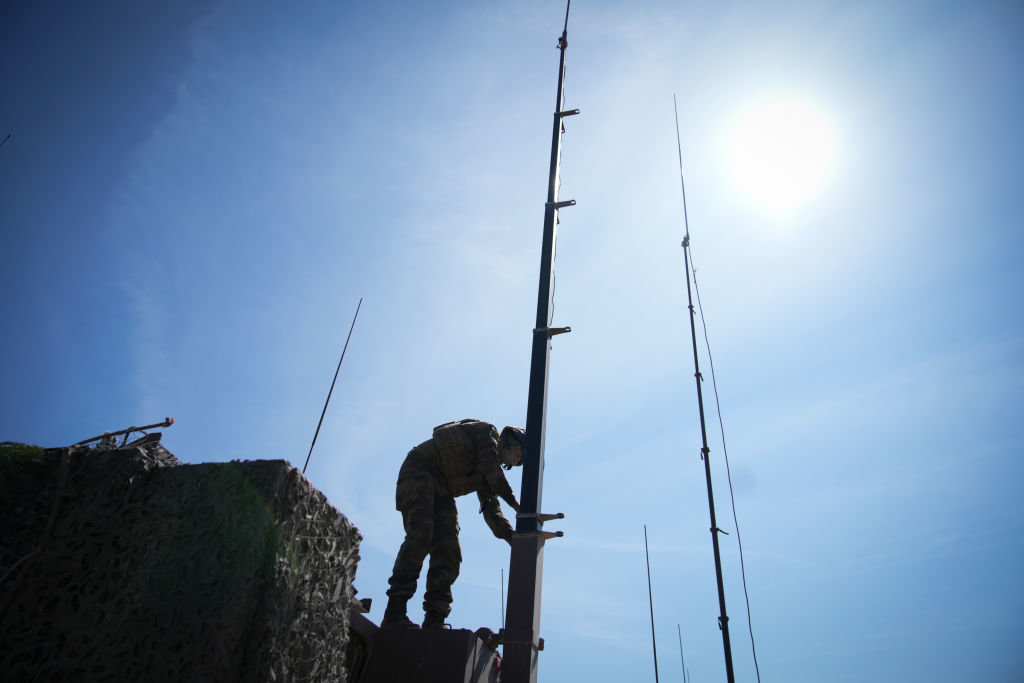
Phillip Day. Credit: Scotgold Resources